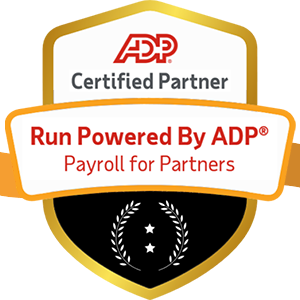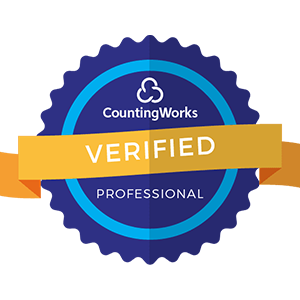
The way we work has fundamentally changed. The office 9-to-5 is a relic of the past as remote and hybrid work arrangements become the new normal. Over the past few years, companies have embraced the flexibility, productivity, and cost savings of distributed workforces. But this seismic shift comes with new challenges, especially when it comes to something as critical as payroll.
Paying remote employees isn't as simple as it used to be when everyone worked under the same roof. With team members now spread across different cities, states, and even countries, businesses face a tangled web of tax implications, compliance requirements, and logistical hurdles. Getting payroll wrong in this complex new landscape can lead to costly penalties, unhappy workers, and unnecessary administrative headaches.
But there's good news: with the right strategies and tools, you can streamline payroll for your remote team and sidestep the pitfalls. In this comprehensive guide, we'll walk you through everything you need to know to pay your distributed workforce efficiently, accurately, and painlessly. Whether you have one remote employee or one hundred, these tips will save you time, money, and stress. Let's dive in.

The first step to nailing remote payroll is understanding the legal lay of the land. When your employees work in different jurisdictions, you're suddenly subject to a patchwork of state and local tax laws, in addition to federal regulations.
For example, if you're based in New York but have a remote worker in California, you'll need to withhold California state income taxes from their paycheck and register with the state's employment development department. Multiply that by however many states and cities your team spans, and the compliance burden starts to add up quickly.
The consequences of getting this wrong can be severe. If you fail to properly withhold payroll taxes or file the necessary paperwork, you could face stiff fines, penalties, and even legal action. In other words, noncompliance is a risk you can't afford to take.
So what's the solution? Start by determining which states and localities have "nexus" rules that apply to your business. Generally, if you have employees working in a given area, you'll need to comply with that jurisdiction's payroll tax laws.
Next, register your business with the appropriate state and local agencies, such as the department of revenue or labor department. This will typically involve obtaining a tax ID number and submitting any required paperwork.
From there, you'll need to calculate and withhold the applicable taxes from each employee's pay based on their work location, not your company's. This can get complicated quickly, especially if you have workers in multiple states with different tax rates and rules.
To keep things manageable, consider investing in payroll software that automatically calculates taxes based on each employee's location. Many modern platforms also file taxes on your behalf and stay up-to-date with changing regulations so you don't have to.
Of course, taxes are just one piece of the compliance puzzle. You'll also need to abide by each jurisdiction's rules around things like minimum wage, overtime pay, pay stubs, and more. Again, payroll software can help you navigate this patchwork of requirements without losing your mind.
The bottom line? When it comes to remote payroll compliance, ignorance is not bliss. Do your homework, understand your obligations, and put systems in place to meet them consistently. Your future self will thank you.
Another key consideration for remote payroll is worker classification. When you hire a new team member, you'll need to determine whether they should be classified as an employee or an independent contractor. Getting this wrong can have serious financial and legal consequences.
In general, employees are workers over whom you have significant control, such as setting their schedule, providing tools and equipment, and directing their day-to-day activities. You're responsible for withholding payroll taxes, paying unemployment insurance, and providing any mandatory benefits like health insurance or paid leave.
Independent contractors, on the other hand, are self-employed individuals who have more autonomy over how and when they work. They're responsible for paying their own taxes and aren't entitled to employee benefits.
Misclassifying workers as contractors when they should be employees is a common pitfall, especially in the world of remote work. Some businesses do this intentionally to avoid payroll taxes and benefits costs, but it's illegal and can result in hefty penalties, back taxes, and lawsuits.
To avoid misclassification, familiarize yourself with the criteria the IRS and state agencies use to determine worker status. In general, the more control you have over a worker, the more likely it is that they should be classified as an employee.
If you're unsure how to classify a particular worker, consult with an employment attorney or accountant who specializes in these issues. It's better to get it right from the start than to face the consequences of misclassification down the road.
Once you've determined a worker's status, be sure to obtain the necessary paperwork from them. For employees, this typically includes a W-4 form for tax withholding purposes. For contractors, you'll need a W-9 form with their taxpayer identification number.
Proper worker classification is a critical component of compliant remote payroll. By understanding the rules and taking a proactive approach, you can avoid costly mistakes and focus on building a thriving remote team.

For businesses with a globally distributed workforce, international payroll adds another layer of complexity. Paying team members in different countries involves navigating a maze of foreign tax laws, exchange rates, and cross-border payment methods.
One of the first things to understand is the difference between hiring international employees versus contractors. In general, if you have significant control over a worker's activities and they're integral to your business, they may be considered an employee under foreign laws, even if they're classified as a contractor in the U.S.
Misclassifying international workers can lead to compliance issues and legal trouble, so it's important to understand the rules in each country where you have team members. Consult with local experts who can help you navigate the nuances of foreign employment laws.
When it comes to actually paying international employees, you'll need to consider factors like currency exchange rates and transfer fees. Paying in the employee's local currency can help them avoid costly conversion fees, but it also exposes your business to exchange rate fluctuations.
One solution is to use a global payroll provider that specializes in international payments. These services can handle the complexities of multiple currencies, exchange rates, and local compliance requirements, making it easier to pay your team accurately and on time.
Another option is to set up a local entity or subsidiary in countries where you have a significant presence. This can give you more control over payroll and compliance, but it also comes with additional costs and administrative burdens.
Regardless of how you choose to handle international payroll, communication is key. Make sure your global team members understand their pay structure, any deductions or withholdings, and how they'll receive their money. Clear expectations can go a long way in building trust and avoiding misunderstandings across borders.
Managing international payroll is a complex undertaking, but with the right approach and tools, it's possible to build a thriving global team while staying compliant and efficient.
Now that we've covered some of the key challenges of remote payroll, let's dive into some best practices for streamlining your process and making payday a breeze.
When you're managing payroll for a distributed team, having all your data in one place is essential. Use a centralized system to store employee information, track time and attendance, and manage pay schedules. This will help you avoid errors and inconsistencies that can arise from juggling multiple spreadsheets or databases.
Manual payroll processes are time-consuming and error-prone, especially when you're dealing with multiple jurisdictions and payment methods. Invest in payroll software that automates tasks like calculating taxes, generating pay stubs, and disbursing funds. This will save you time and reduce the risk of costly mistakes.
Remote workers can sometimes feel disconnected from the rest of the organization, so it's important to keep them in the loop when it comes to payroll. Make sure they understand their pay structure, any deductions or withholdings, and when they can expect to receive their money. Regular communication can help build trust and avoid misunderstandings.
As we've discussed, remote payroll comes with a host of compliance challenges. Make sure you're staying up-to-date with changing regulations and requirements in each jurisdiction where you have employees. Consider working with a payroll provider or consultant who specializes in multi-state and international compliance.
Even with the best processes in place, payroll mistakes can happen. Have a plan in place for how you'll handle errors or delays, and communicate that plan to your team. If an employee's pay is delayed or incorrect, be transparent about what happened and what you're doing to fix it. A little empathy can go a long way in maintaining trust and morale.
Finally, don't be afraid to ask your team for feedback on your payroll process. Are there areas where they feel confused or frustrated? Are there ways you could make payday smoother or more efficient? Continuously gathering input and iterating on your process will help you build a payroll system that works for everyone.
Managing payroll for a remote team is no small feat, but with the right tools, processes, and mindset, it's possible to create a seamless and stress-free experience for everyone involved. By staying organized, communicating clearly, and prioritizing compliance, you'll be well on your way to mastering the art of remote payroll.

As remote work continues to gain traction, businesses that can adapt and thrive in this new landscape will have a significant competitive advantage. By optimizing your payroll process for a distributed workforce, you'll be better positioned to attract and retain top talent from around the world.
But the benefits of remote payroll optimization go beyond just compliance and efficiency. When you get payroll right, you send a powerful message to your team that you value their work and are committed to supporting them, no matter where they're located.
In a world where the traditional office is no longer the default, businesses that can build trust, transparency, and seamless operations across borders will be the ones that succeed in the long run. By embracing the remote payroll revolution, you'll be at the forefront of this transformative shift in the way we work.
Of course, optimizing payroll is just one piece of the remote work puzzle. To truly thrive in this new era, businesses will need to rethink everything from communication and collaboration to culture and employee engagement. But by starting with a strong foundation in payroll, you'll be well on your way to building a resilient, adaptable, and thriving remote team.
So embrace the challenge, stay curious, and never stop iterating. The future of work is here, and it's time to make sure your payroll process is ready for it.
Key Takeaways


